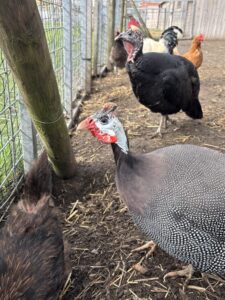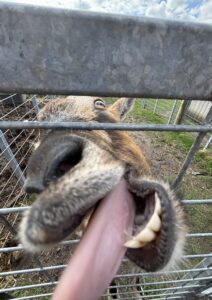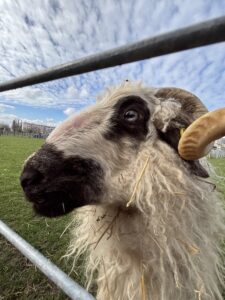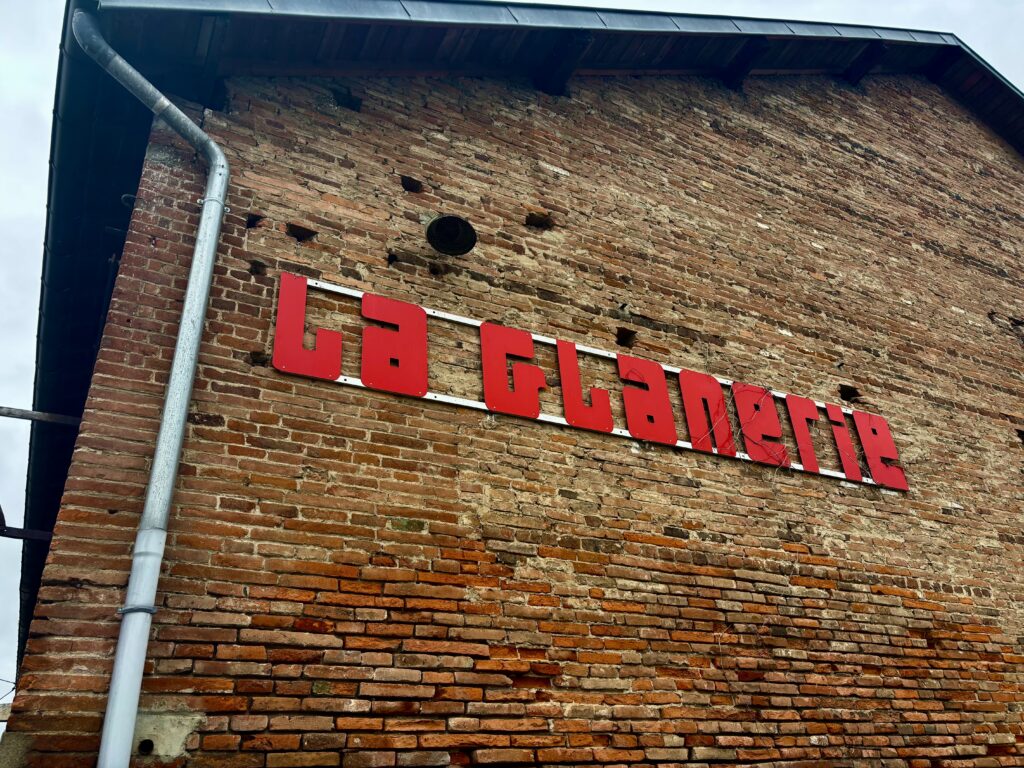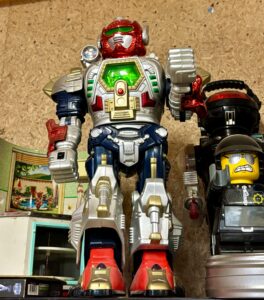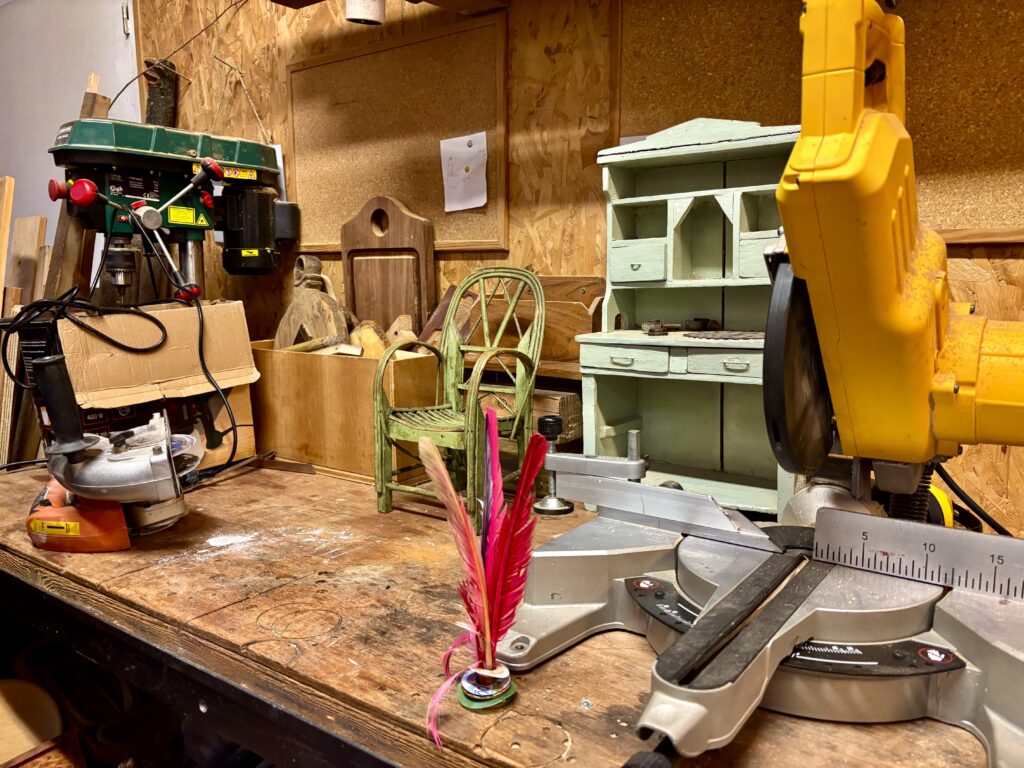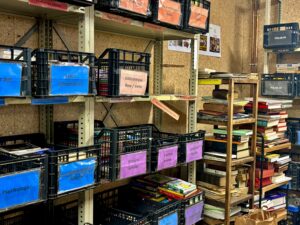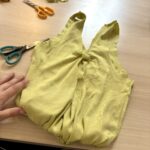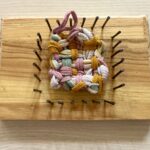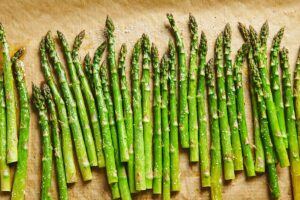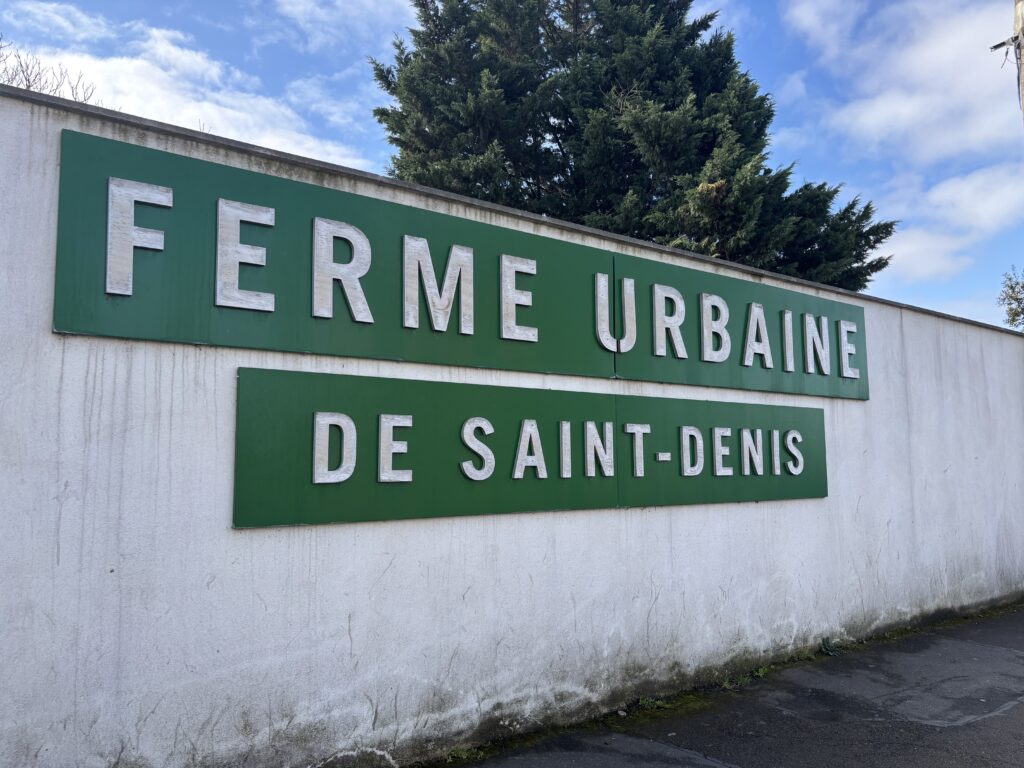
Sign for Le Ferme Urbaine de Saint Denis. Image courtesy of Dinela Dedic (2025).
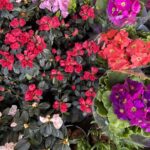
Flowers grown on the farm being sold to the public. Image courtesy of Dinela Dedic (2025).
Today we had the privilege of visiting Le Ferme Urbaine de Saint Denis located within the limestone streets of urban Pairs. This particular farm has been an agricultural site for hundreds of years and was bought by the municipality of Paris recently after the passing of its fourth generational farmer. Aiming to preserve the valuable land and its soils, the municipality of Paris is lending the property to Gally Farms, a company primarily focused on greenspace maintenance but also owns three urban farms in France. Gally Farms opened Le Ferme Urbaine de Saint Denis in 2019, but it has only been certified organic by the French government this year for its non-hydroponic operations.
Although the farm does sell its produce in a short-chain system, its primary
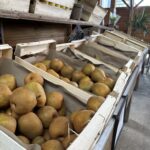
The farm shop where produce is sold from farmer to consumer. Image courtesy of Dinela Dedic (2025).
goal is not production. Rather, Le Ferme Urbaine de Saint Denis is dedicated to education and hopes to connect local youth to agriculture who would never have had that exposure otherwise. Every Wednesday, the farm invites students to bake bread and hosts other activities such as tending to the field and caring for the animals. The farm also hosts teambuilding activities among their full-time employees and volunteers, providing education on composting and organic agriculture. The farm has run into some specialized challenges, however. By law, root vegetables are not allowed to be grown despite healthy soil because of pollution being released from the city and likewise, the eggs produced by their chickens are not allowed to be sold for human consumption. To combat these issues, Le Ferme Urbaine de Saint Denise feeds unsellable food to other animals such as goats or pigs and utilizes a compost system to put nutrients back into the soil.
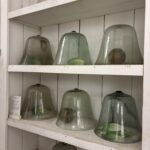
Cloches used on the farm for hundreds of years. Image courtesy of Dinela Dedic (2025).
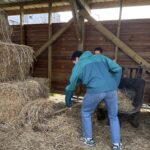
The brave Landon loading hay for the animals. Image courtesy of Dinela Dedic (2025).
On our visit, we started our tour with discussion over coffee and were then guided across the rest of the facility. We had a wonderful time feeding the livestock, especially the donkey, Apache, and Fleur the sheep, who along with the other animals live on the farm purely for educational purposes. We were also able to observe the growing space and the shop where the products are sold directly from farmer to consumer. The tour ended in the museum, where tools such as cloches used on the land hundreds of years ago are preserved for viewing. Our engagement as college students on the farm was exemplary of the type of engagement younger kids would gain on their visits and only emphasized the importance of having a connection to where your food comes from. This is especially relevant in France, where many older farmers are retiring and the land needs preservation by the newest generation to keep implementing sustainable agriculture.
- Amimals living on Le Ferme Urbaine de Saint Denis, including Fleur the sheep! Images courtesy of Dinela Dedic (2025).
Link to Le Ferme Urbaine de Saint Denis’ Website for More Information
Sources
Raworth, K. (2023.) Donut Economics: Seven Ways to Think Like a 21st-Century Economist. Chelsea Green Publishing.
The urban farm – Saint-Denis. (n.d.). The Farms of Gally. https://www.lesfermesdegally.com/la-ferme-urbaine-saint-denis
